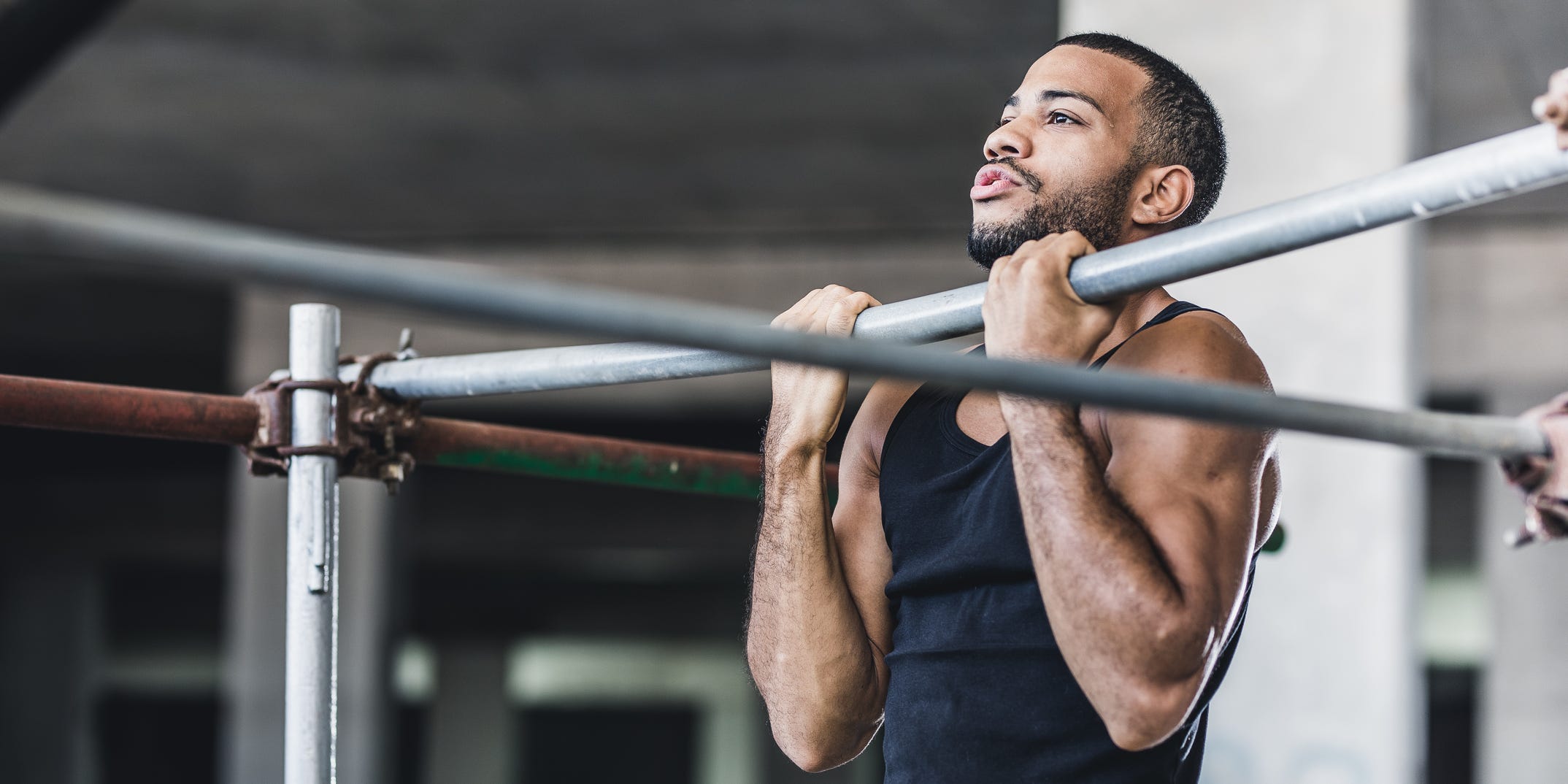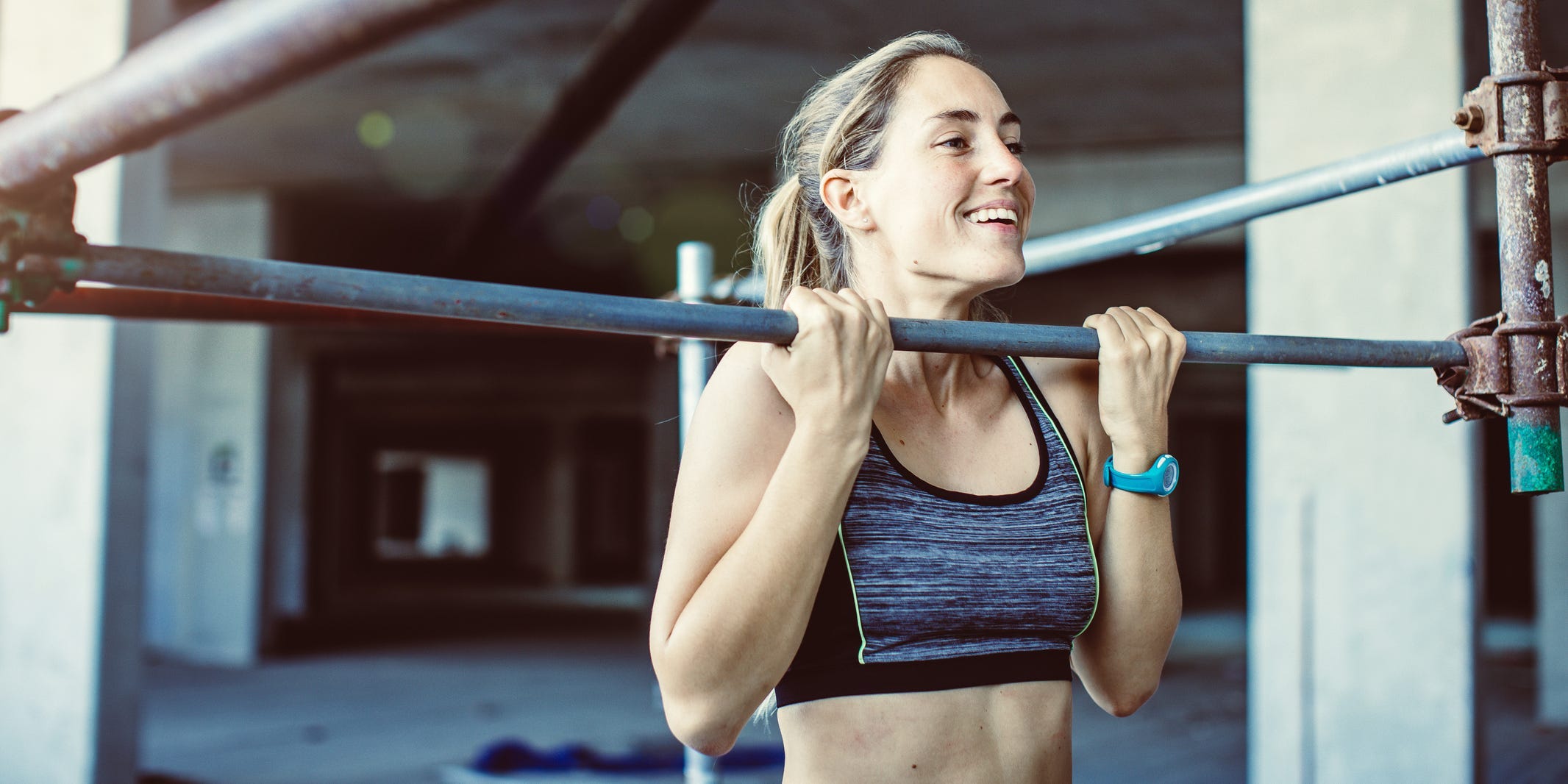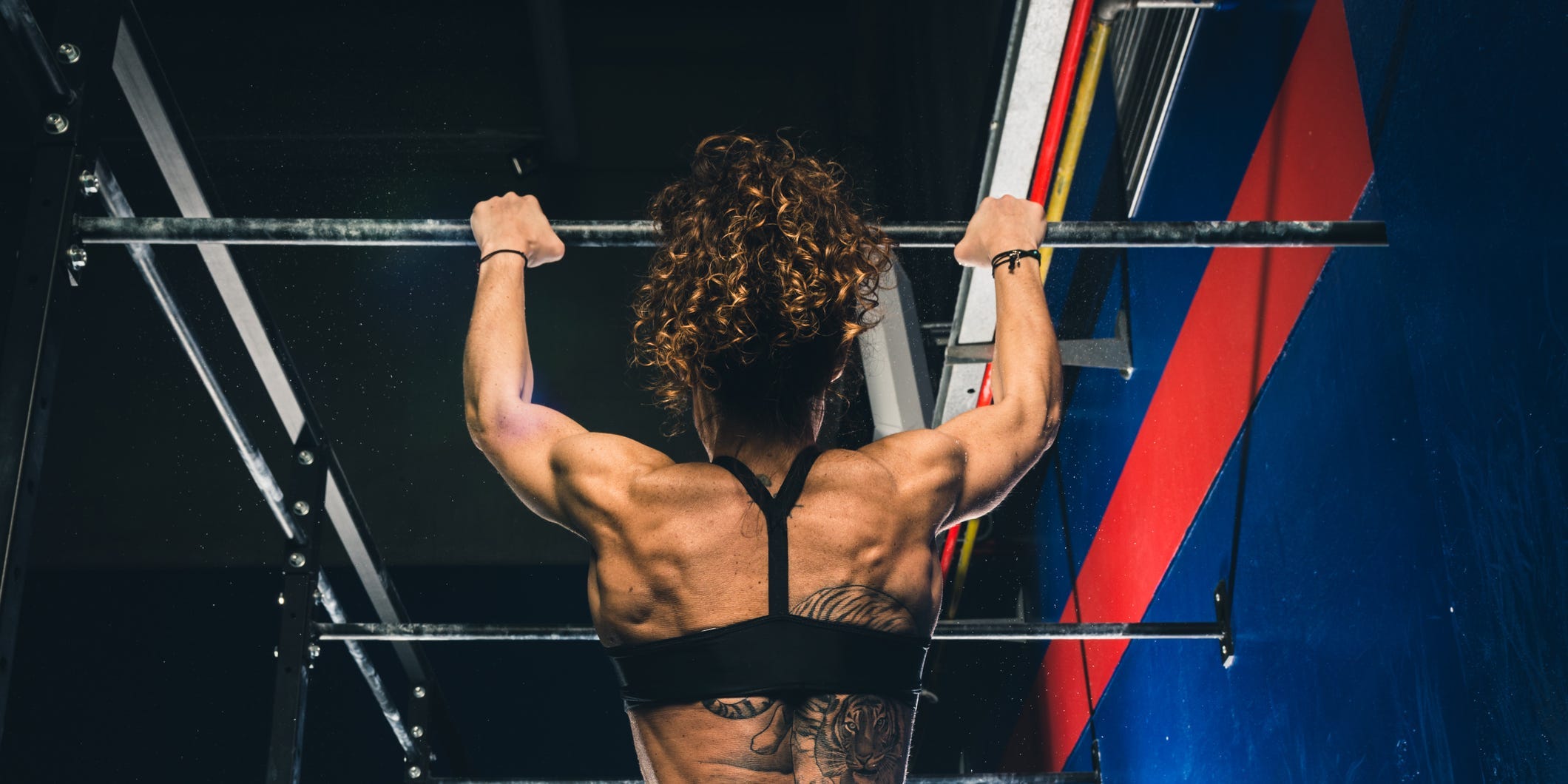
sanjeri/Getty Images
- The main difference between chin-ups and pull-ups is how you grip the bar.
- For chin-ups, you grip the bar with your palms facing you, but with pull-ups, you grip the bar with your palms facing away from you.
- As a result, chin-ups better work the muscles on the front of your body, like your biceps and chest, while pull-ups are more effective at targeting your back and shoulder muscles.
- This article was medically reviewed by Joey Thurman, CSCS, CPT, FNS, a Chicago-based fitness expert and MYX Fitness coach.
- Visit Insider’s Health Reference library for more advice.
Chin-ups and pull-ups are highly beneficial bodyweight exercises that target your entire upper body. And while you may use the terms interchangeably, the two moves are actually quite distinct.
The big difference comes in how you grip the bar. Put most simply, chin-ups are performed with your palms facing toward your body, and pull-ups are performed with your palms facing away from you.
The change in grip position results in a large difference in muscle activation and grip strength, says Andy Sobuta, a physical therapist at Spaulding Rehabilitation Center, which is an official teaching partner of the Harvard Medical School Department of Physical Medicine and Rehabilitation.
Here’s what you need to know about the difference between chin-ups and pull-ups, which muscles they target, and how to add them to your workout routine.
What is a chin-up?

sanjeri/Getty Images
A chin-up is a strength training exercise that uses your entire body weight, with a special focus on your upper body and core.
While it requires a great deal of strength, the move is rather straightforward:
- Grab the bar with both hands, with your palms facing you, and arms shoulder-width apart.
- Pull yourself up until your chin is above the bar. Your elbows will be fully bent here.
- Pause for a second.
- With a controlled motion, lower yourself all the way back down, until your arms are straight.
In general, the chin-up may be better for someone new to a body-weight move, because it is typically the easier of the two movements, says Sobuta. Furthermore, those lacking in upper back flexibility may have an easier time with the chin-up.
This is because chin-ups put your arms in a more natural position, which reduces injury risk to your shoulders. Doing chin-ups with proper form will also improve your grip strength and posture.
What muscles do chin-ups work?
Chin-ups work your upper back and arm muscles, specifically the biceps, forearms, shoulders, and latissimus dorsi, or "lats." Like pull-ups, chin-ups also engage your abdominal muscles throughout the move.
However, Sobuta says chin-ups differ from pull-ups in one major way. The underhand grip position of the chin-up activates the anterior chain muscles, which are located in the front of your body, such as the biceps and pectorals — while the pull-up focuses on the posterior chain muscles in your back.
What is a pull-up?

AlexD75/Getty Images
Doing a pull-up is similar to doing a chin-up. But besides the slight variations in your grip and stance, there are also differences in how your body responds to the move.
These are the steps to properly do a pull-up:
- Grab the bar with your hands shoulder-width apart and your palms facing away from you.
- Use your upper-body strength to pull yourself up until your chin is over the bar.
- Pause for a second.
- Complete the exercise by slowly lowering your body back to the hanging position.
One common issue with pull-ups is strain on your shoulders. To avoid this, it's important to ensure you're using proper form by pulling your shoulders down and back before bending your elbows to pull up.
What muscles do pull-ups work?
Pull-ups target your back muscles primarily, specifically your lats, but also your chest and shoulder muscles. Compared to a chin-up, pull-ups better engage the lower trapezius muscles in your back, between your shoulder blades.
The overhand grip of the pull-up improves posterior chain activation, says Sobuta. Posterior chain refers to the muscles on the back side of your body, which are key for everyday movements.
"Overhead athletes, such as pitchers and volleyball players, may benefit more from the pull-up due to overuse of the biceps and pectorals during sport," says Sobuta. "By training the posterior chain over the anterior chain, this may assist them long-term with preventing injury and improving overall shoulder health."
Takeaways
Chin-ups and pull-ups are both powerful strength moves that use your entire body weight. The main differences come down to slight variations in position and preference. Ultimately, both are great ways to work your entire upper body and engage your core.
Related articles from Health Reference:
- The health benefits of push-ups and how to do them correctly to get the most out of your workout
- 5 health benefits of jumping rope and helpful tips for beginners from celebrity trainer Jillian Michaels
- How to do suspension training exercises at home to get a full-body workout
- 3 major health benefits of jumping jacks and how to do them properly
- 9 tips to run properly, and why your running form matters
